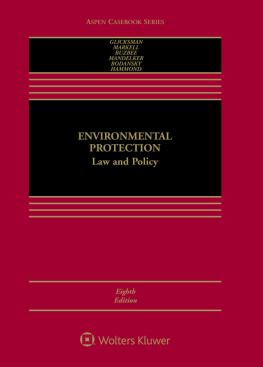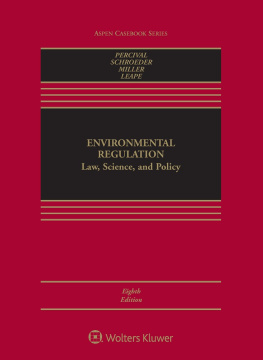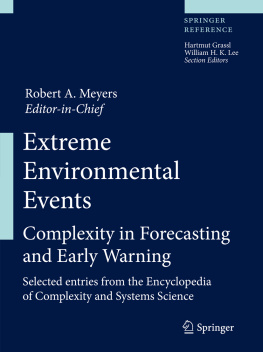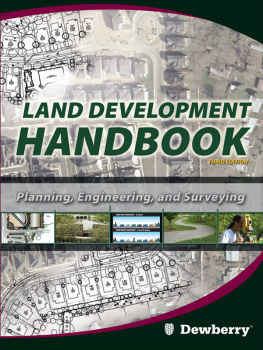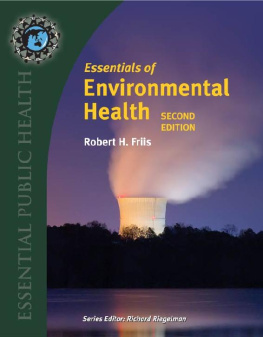
Environmental Site Plans and Development Review
The most effective way to participate in land stewardship and environmental management is to get involved in the review of proposed developments. In smaller communities, this review is primarily done by a planning board or commission made up of volunteer members, guided by professionals in certain aspects such as traffic, historic preservation, civil engineering, water supply, and wastewater disposal. In larger communities, professional planning staff, with the assistance of municipal engineers, conducts the review, which will then be presented to the planning commission. In either case, everyoneofficials, volunteers, reviewers, consultants, neighbors, and the public in generalneeds to know what is being proposed. The site plan itself is the primary tool for understanding the proposal.
Environmental review is not an easy task, even for consultants and professional planners. There is a need for a general guide that presents the design, infrastructure, and environmental issues to address, what a reviewer needs to know about these issues, and how to interpret them. The book points the reader to accessible, low-cost resources to aid in the review process. In these times of climate change, rising populations, energy challenges, and economic turmoil, there is a real need for development to occur in as efficient and environmentally responsible a manner as possible. Citizen review is a critical step in the approval, alteration, or denial of site plans for land subdivision and new development. Hence, informed participants in the review processes are more important than ever.
This book is designed to assist professional archaeologists, environmental consultants, and others interested in construction, development, and other physical land alteration that must go before some sort of review board. The book is also suitable for college undergraduates and graduate students in fields that bring them into environmental development of sites. And it is useful for neighbors and other members of the public who want to understand proposed land development in their neighborhood.
Robert M. Sanford is Professor of Environmental Science & Policy and Chair of the Department of Environmental Science & Policy at the University of Southern Maine in Gorham, Maine. He has a Bachelors degree in Anthropology from State University of New York College at Potsdam and a Master of Science and PhD in Environmental Science & Planning from the State University of New York College of Environmental Science & Forestry at Syracuse. He is the author of Reading Rural Landscapes and the co-author of Cultural Resources Archaeology, Practicing Archaeology, and other books.
First published 2018
by Routledge
2 Park Square, Milton Park, Abingdon, Oxon OX14 4RN
and by Routledge
711 Third Avenue, New York, NY 10017
Routledge is an imprint of the Taylor & Francis Group, an informa business
2018 Robert M. Sanford
The right of Robert M. Sanford to be identified as author of this work has been asserted by him in accordance with sections 77 and 78 of the Copyright, Designs and Patents Act 1988.
All rights reserved. No part of this book may be reprinted or reproduced or utilised in any form or by any electronic, mechanical, or other means, now known or hereafter invented, including photocopying and recording, or in any information storage or retrieval system, without permission in writing from the publishers.
Trademark notice: Product or corporate names may be trademarks or registered trademarks, and are used only for identification and explanation without intent to infringe.
British Library Cataloguing-in-Publication Data
A catalogue record for this book is available from the British Library
Library of Congress Cataloging-in-Publication Data
A catalog record has been requested for this book
ISBN: 978-1-62958-477-5 (hbk)
ISBN: 978-1-62958-478-2 (pbk)
ISBN: 978-1-315-15847-1 (ebk)
Typeset in ApexBembo
by Apex CoVantage, LLC
Appreciation and gratitude to Dr. Tom Daniels of the University of Pennsylvania and Dana Hanley, Director of Development, Essex, Vermont. My thanks to Dr. Mark Lapping, Dr. Daniel Martinez, Dr. Joe Staples, and Dr. Travis Wagner, University of Southern Maine (USM). Thank you to USM alumni Matt Borden and Megan McLaughlin for comments and suggestions. Thank you to Dr. Karen G. Harry, University of Nevada, Las Vegas, for reviewing the chapter on historical and archaeological impacts. Thank you to Peter Burke; Lindsey Weeks; Dr. Garrett Cook; Brad Krotzer of CSI Custom Septic, Inc.; Heather True of Cumberland County Soil & Water Conservation District; Anna Almaroad of Plastic-Mart, Inc.; and Chris, Morgan, and the gang at Sebago Brew Pub. As always, thank you, Paul F. Miller. Special thank you to Robin A. Sanford. Thanks to Barry Sheff, P.E., of Woodard & Curran, Inc. and Owens McCullough, P.E., and Emmerald Irvin of Sebago Technics for help with figures, many of which are from plans developed by their companies. Much appreciation to my students at the University of Southern Maine. I would also like to express my gratitude to the fine editorial team at Routledge, Taylor & Francis Group, and their associates.
Growth and change are two hallmarks of Americas cities, suburbs, and rural landscapes. In 1990, there were 248 million Americans. As of 2016, there are 324 million of us. It is like adding a large city every year. The U.S. Census Bureau has projected that by 2050, the nations population will exceed 420 million. Thus, over the next 40 years, local governments will have to make many decisions about where new houses, stores, factories, schools, and offices should be located, and how they will be serviced by roads, mass transit, sewer and water facilities, and police and fire protection. Developers and landowners will propose projects that subdivide land parcels into smaller lots for eventual sale and will submit plans to develop land for commercial, residential, and industrial uses. Some of these proposals will be aimed at redeveloping urban areas; other proposals will seek to develop greenfield sites in the suburbs or countryside.
Local governmentscities, counties, villages, or townshipsare usually required by law to review site plans that show proposed subdivisions (the creation of two or more lots) and land development plans to construct buildings. The reasons are simple:
- To protect the public health, safety, and welfare according to the Tenth Amendment to the United States Constitution. That is, new lots created by subdivision and existing lots should be able to support new buildings with minimal risk of natural hazards;
- To require certain infrastructure (such as sewer, water, streets, sidewalks) of all developers according to the equal protection clause of the 14th Amendment;
- To create a system for the legal creation and sale of lots; and
- To help implement the goals and objectives of the local governments comprehensive planthe blueprint for growth and development.
Recently, the concept of sustainability has enjoyed widespread popularity. Sustainability implies the stew-ardship of land and community resources so future residents can enjoy a quality of life at least as good as that enjoyed by current residents. Sustainability has three related components: economic, environmental, and social sustainability. Sustainability is best thought of as a direction to move toward rather than a goal to reach. Thus, the subdivision of land and the development of land into houses, stores, factories, and offices should occur in such a way as to minimize impacts on the environmentespecially on air, water, and wildlife habitatsto create well-paying jobs over the long-term, and to promote a mix of land uses and residents of differing incomes. All too often, the review of subdivisions and land development plans has been done with an eye toward how much property tax revenue (or sales tax revenue in the West) a development will generate. This is short-sighted and will result in traffic problems, such as congestion along highways with strip commercial outlets, as well as separating wealthy landowners from less wealthy residents.






